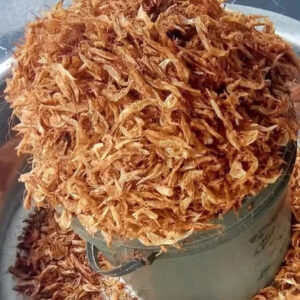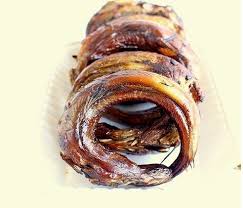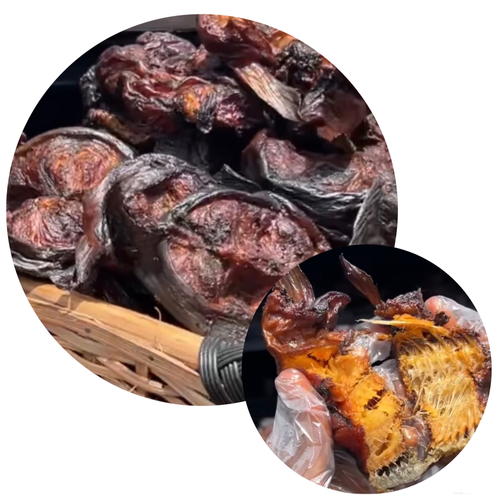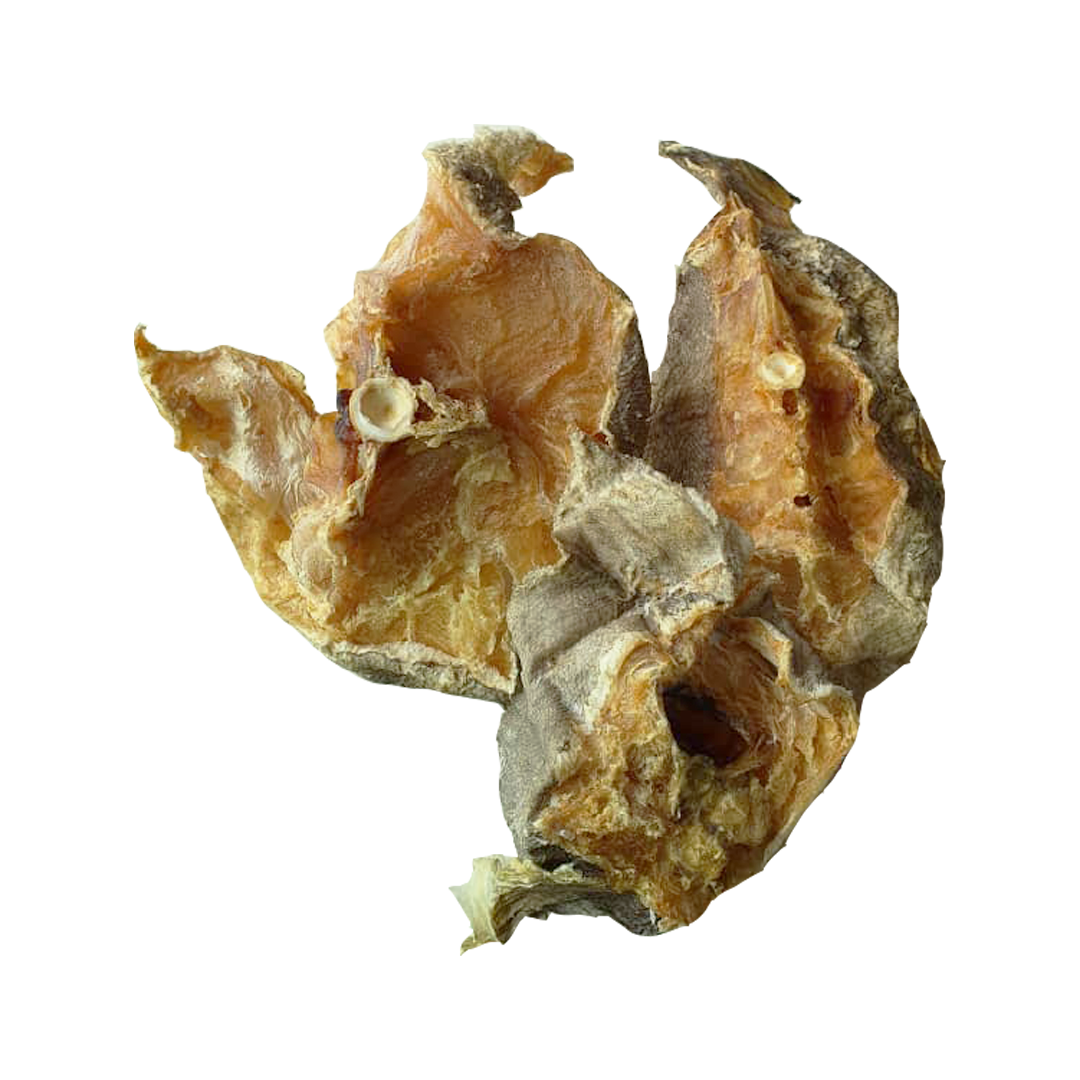

Stockfish Cutlet
₦42,000.00 Original price was: ₦42,000.00.₦40,000.00Current price is: ₦40,000.00.
Stockfish cutlet, made from air-dried cod or similar fish, offers a rich, umami flavor and firm texture. High in protein, omega-3 fatty acids, vitamins, and minerals, it supports muscle, bone, and heart health. Ideal for soups, stews, salads, and more, rehydrate before cooking. Store in a cool, dry place for long shelf life.
Description
Stockfish cutlet is a dried fish product made from whole or parts of fish, typically cod, that has been cut into smaller, manageable pieces. The drying process, traditionally practiced in Nordic countries like Norway, involves air-drying the fish on wooden racks for several months. This method preserves the fish and intensifies its flavor, making stockfish cutlets a prized ingredient in various culinary traditions.
Characteristics and Types
- Species: Commonly made from Atlantic cod (Gadus morhua), but can also include haddock, pollock, and other whitefish.
- Appearance: Stockfish cutlets are typically light brown to beige with a firm and fibrous texture. They are cut into uniform pieces for ease of use.
- Texture: Hard and dry when unsoaked, becoming tender and flaky once rehydrated.
- Flavor: Rich, concentrated fish flavor with a slightly sweet and umami-rich profile.
Nutritional Profile
Stockfish cutlets are nutrient-dense, offering a variety of essential nutrients:
- Protein: Extremely high in protein, providing essential amino acids for muscle repair and growth.
- Fats: Low in fat, with some healthy omega-3 fatty acids.
- Vitamins: Rich in vitamins such as vitamin D, vitamin B12, and niacin (B3).
- Minerals: High in essential minerals like calcium, iron, phosphorus, and potassium.
- Calories: Low to moderate caloric content, depending on preparation.
Health Benefits
- High Protein Content: Essential for muscle development and overall body function.
- Bone Health: Rich in calcium and phosphorus, crucial for maintaining strong bones and teeth.
- Heart Health: Omega-3 fatty acids help reduce inflammation and support cardiovascular health.
- Immune Support: Provides essential vitamins and minerals that boost the immune system.
- Low in Fat: A healthy source of protein without high levels of unhealthy fats.
- Energy Boost: The high protein and nutrient content provide sustained energy.
Culinary Uses
Stockfish cutlets are versatile and used in various culinary applications:
- Soups and Stews: Add a rich, savory flavor to traditional dishes like Nigerian Egusi Soup or Scandinavian Fish Stew.
- Salads: Can be flaked and added to salads for a protein boost.
- Main Dishes: Often rehydrated and cooked as a main protein in meals, paired with vegetables and sauces.
- Casseroles: Adds depth of flavor to casseroles and baked dishes.
- Snacks: Can be eaten as a protein-rich snack when rehydrated and lightly cooked.
How to Use Stockfish Cutlet
- Preparation: Rinse stockfish cutlet to remove any surface impurities or salt.
- Soaking: Soak in cold water for 1-3 days, changing the water regularly, to rehydrate and soften the cutlet.
- Cooking: After rehydration, the cutlet can be boiled, fried, or baked. It is often added to soups, stews, or casseroles.
- Flaking: Once cooked, the fish can be flaked and used in various dishes like salads or pasta.
Storage and Shelf Life
- Storage: Store stockfish cutlet in a cool, dry place. Once rehydrated, it should be kept in the refrigerator and consumed within a few days.
- Shelf Life: When stored properly, dried stockfish cutlet can last for several years. Rehydrated cutlets should be consumed within a week.
Culinary Tips
- Flavor Enhancement: Use aromatic herbs, spices, and ingredients like garlic, onions, and tomatoes to complement the strong flavor of stockfish.
- Texture Management: Ensure proper soaking and cooking to achieve a tender texture.
- Complementary Ingredients: Pairs well with root vegetables, tomatoes, olives, and various leafy greens.
- Cooking Methods: Experiment with different cooking methods such as boiling, grilling, or baking to explore various textures and flavors.
Additional information
| Weight | N/A |
|---|---|
| Package Size | 1kg |
Related products
-
Sale!

Dried Periwinkle
₦36,000.00 – ₦48,000.00Price range: ₦36,000.00 through ₦48,000.00 Select options This product has multiple variants. The options may be chosen on the product page -
Sale!

Oron Crayfish
₦7,100.00Original price was: ₦7,100.00.₦7,000.00Current price is: ₦7,000.00. Select options This product has multiple variants. The options may be chosen on the product page -
Sale!

Dried Panla Fish
₦80,000.00 – ₦200,000.00Price range: ₦80,000.00 through ₦200,000.00 Select options This product has multiple variants. The options may be chosen on the product page -
Sale!

River Catfish Cutlet
₦76,000.00Original price was: ₦76,000.00.₦75,000.00Current price is: ₦75,000.00. Select options This product has multiple variants. The options may be chosen on the product page

